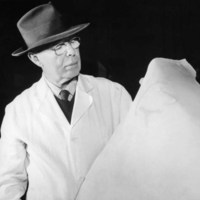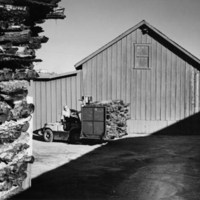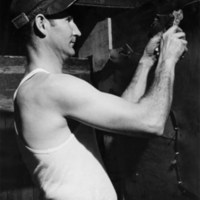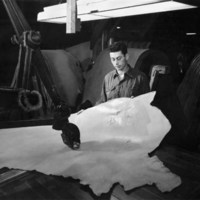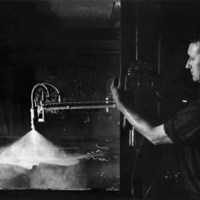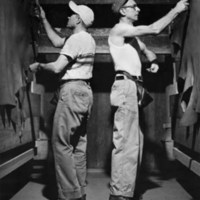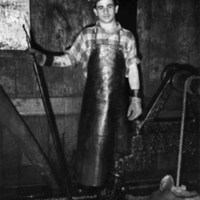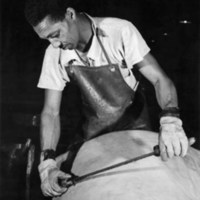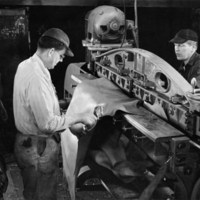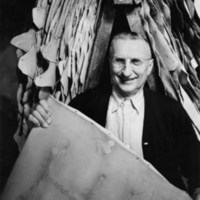Browse Items(166 total)
- Tags: Industries
Sort by:
Ansley Kullman Salz holding a sample of the leather made by his company, the A. K. Salz Tannery in Santa Cruz, California. Ansley bought the San Lorenzo Tannery in 1917 with a relative named Herman Kullman and renamed it the Kullman Salz Tannery. The…
Date: 1954
Type: PHOTO
The tanoak used to dye leather was stored in drying sheds across Highway 9 from the main Salz Tannery complex. Modern forklifts replaced horse and wagon in the 1960s. The drying process took about six months. The building in this photo was used to…
Date: 1954
Type: PHOTO
Salz employee Parky Hibbard tacks leather to large boards prior to drying. The hides stayed tacked to the boards for several days prior to moving to the next process.
Date: 1954
Type: PHOTO
Glazing Salz's California Saddle Leather TM involved using a glazing jack. Each side of the hide was glazed twice to create a mirror-like surface. The protein (albumin) used in the glazing process was derived from egg whites. After drying on the…
Date: 1954
Type: PHOTO
The spray machines at Salz Tannery needed to be constantly adjusted. Depending on the finish required, the spray booths deposited waxes, lacquers, oils, dyes, pigments and protein solutions on the leather. Before this, the leather was dried. After…
Date: 1954
Type: PHOTO
Mel Stubendorff and an unnamed Salz Tannery co-worker tack the hides up to large boards prior to drying. The drying process usually took several days.
Date: 1954
Type: PHOTO
Ansel Adams photographed this Salz employee to illustrate a typical beamhouse outfit. The coverings were made of leather for safety because the "beamhouse" was where hides were tanned in large open pits.
Date: 1954
Type: PHOTO
A Salz employee illustrates the scudding process that removed fine hair roots from the hides. It was a very exacting and challenging task. The implement used was a large, dull blade. The hide was stretched over a wooden, sloped structure designed…
Date: 1954
Type: PHOTO
Salz employee Red McCafferty and a co-worker work with a machine called a "splitter" to separate the hide structure into two distinct layers. Splitting the leather into a thinner, more pliable form, increased its markets.
Date: 1954
Type: PHOTO
Joe Bellas, plant superintendent at the Salz Tannery during the 1950's holds the finished leather product. Bellas was Yugoslavian, and according to the Lezin family "tough and fair".
Date: 1954
Type: PHOTO

